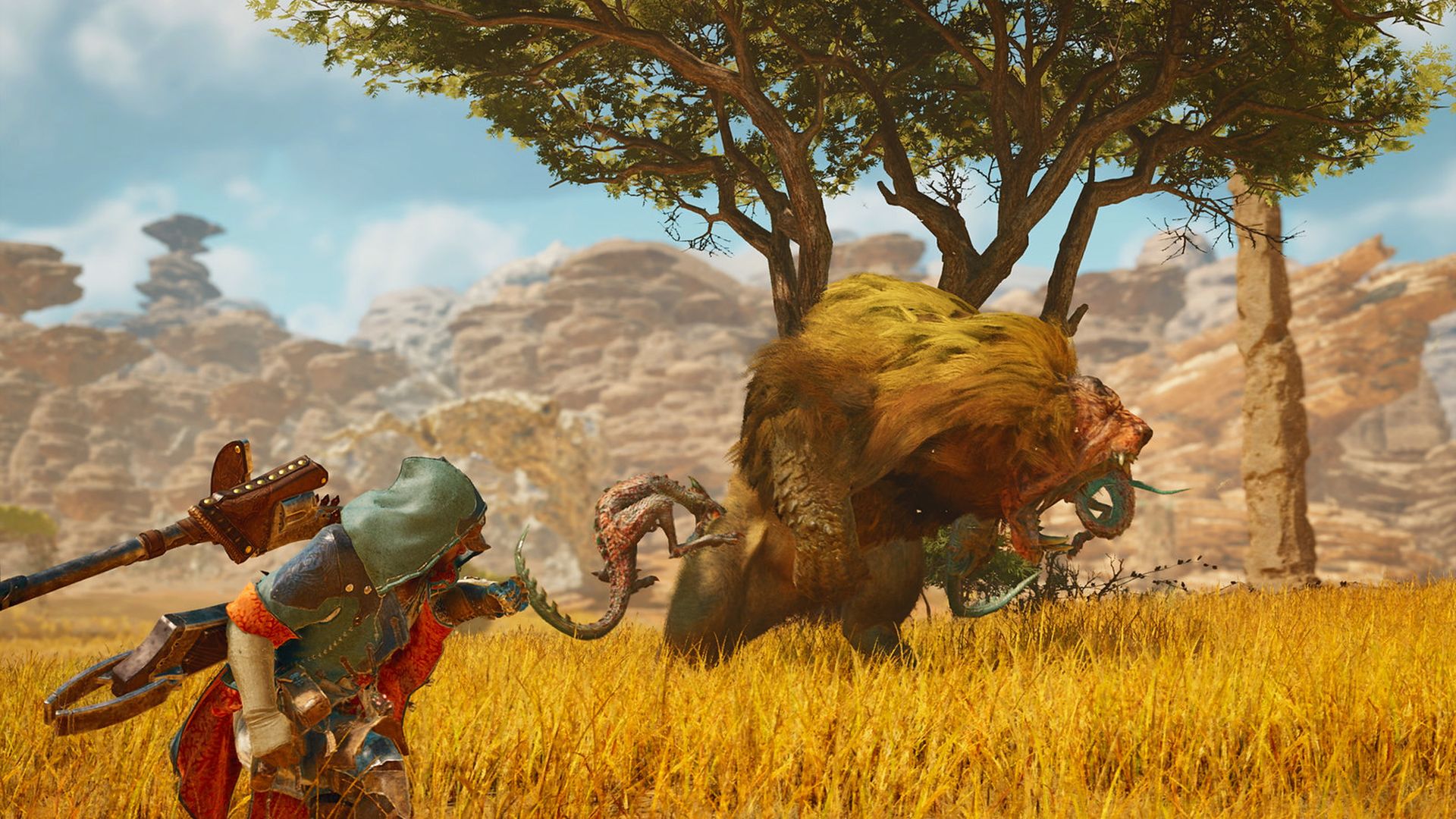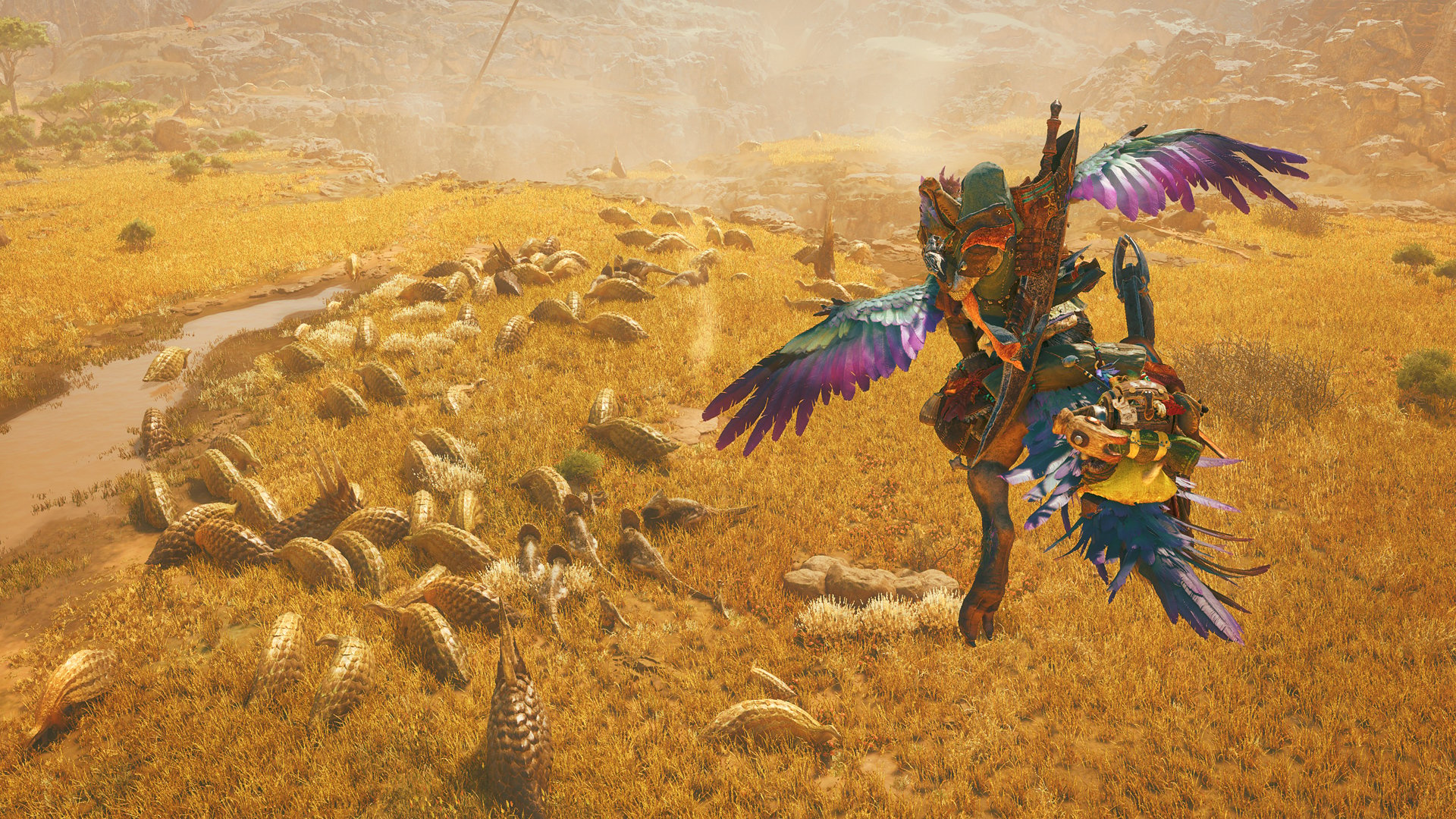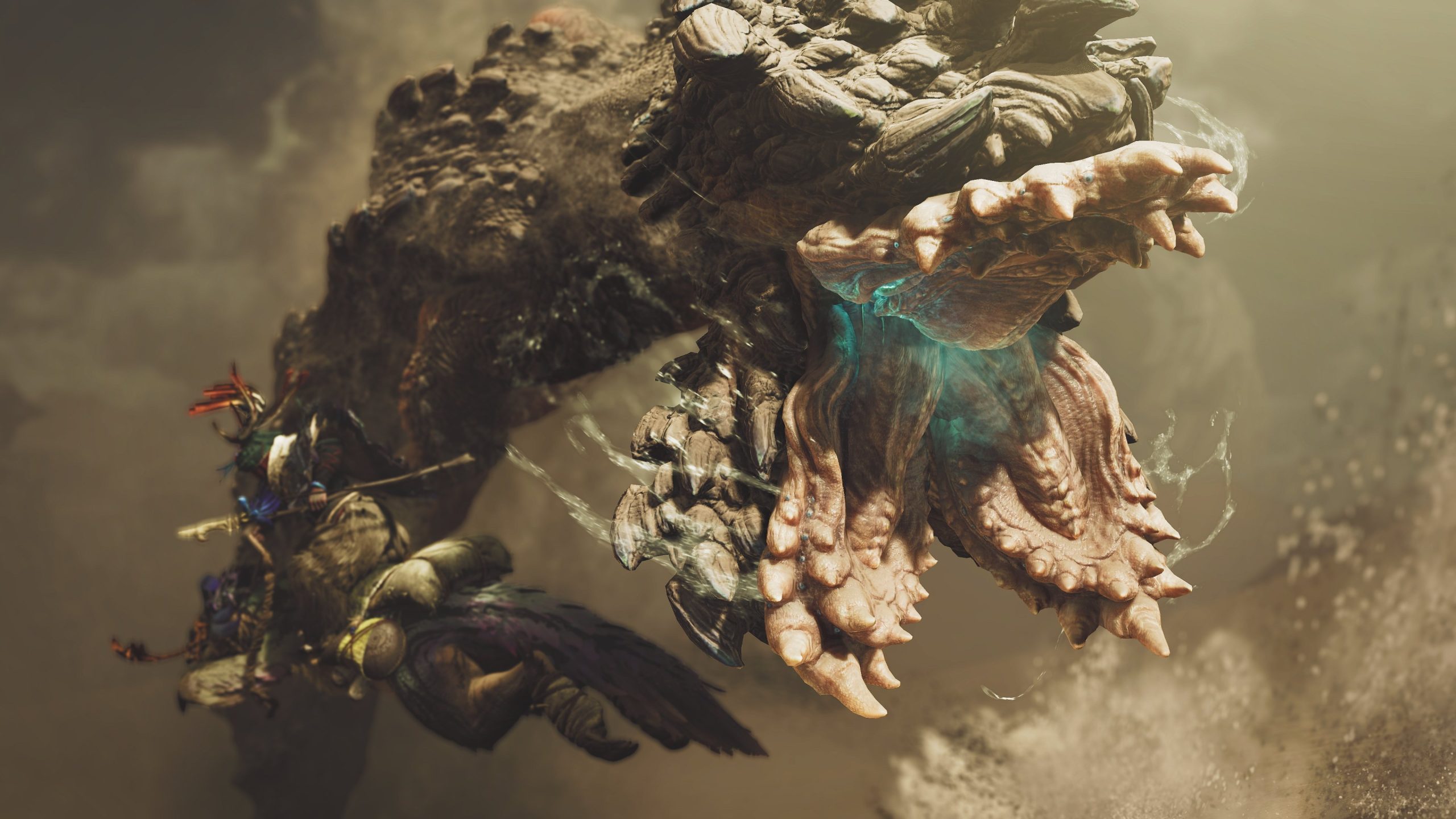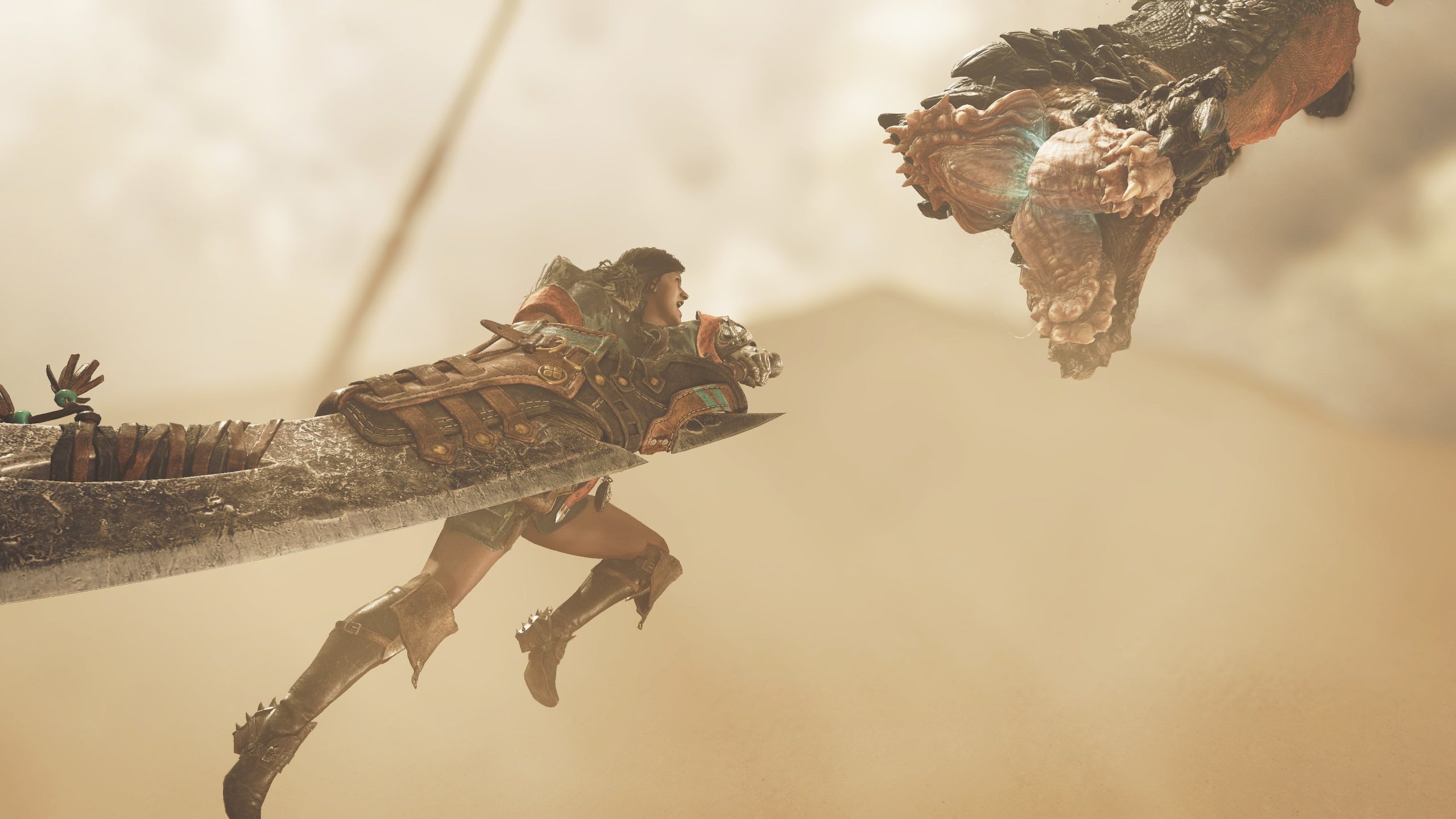The Monster Hunter formula feels like it’s been honed almost to perfection at this point, but Capcom, as ever, remains in the pursuit of something better. The upcoming Monster Hunter Wilds is looking like it’s going to take the beloved series to an entirely new level, with a number of notable changes and improvements promising to continue its upward trajectory. Though Monster Hunter will obviously remain Monster Hunter at its core, Wilds is going to differ from its predecessors in some key ways courtesy of those changes and improvements. Here, we’re going to go over how the action RPG will set itself apart specifically from Monster Hunter Rise. Let’s kick things off with the basics.
SETTING
Every Monster Hunter game takes players to a completely new setting, and Wilds will be no different in that regard. While Monster Hunter Rise was set in and around the locales surrounding Kamura Village, Wilds is heading off to the Forbidden Lands, an uncharted region of the world that the Hunter’s Guild has previously never explored. Of course, this also means we’ll get a new hub location.
HUB VILLAGE
A big part of the charm pf every new Monster Hunter game is getting to explore and getting familiar with an entirely new hub village. Monster Hunter Rise’s aforementioned Kamura Village endeared itself to many with its atmosphere and Japanese-inspired architecture. Wilds, on the other hand, will include multiple villages, each in a different map. That includes Kunafa Windsong Village in the Windward Plains, Wudwud Hideout in the Scarlet Forest, and Azuz in the Oilwell Basin.
SEAMLESS TRAVEL
This is bound to be one of Monster Hunter Wilds’ biggest and most popular changes among series fans. Rise, like all of its predecessors, didn’t feature seamless maps, which meant going from your hub to a map was always separated by a load screen. With Monster Hunter Wilds, Capcom is finally removing that annoyance. Now, players will be seamlessly be able to travel from a village to the wilds and back without any interruptions.
TACKLING QUESTS
Seamless traversal between the hub and the wilds will also bring some significant structural changes. Again, Monster Hunter Rise, like all previous Monster Hunter games, required players to begin every quest at the hub’s quest board, while the end of every mission would also force you to return to the village. With the virtual boundaries between the hubs and the open world maps beyond their walls now gone, however, in Monster Hunter Wilds, players will be able to begin quests simply by finding their target in the world, while you will also no longer be forced to return to the hub after finishing a mission.
NO WIREBUGS
The Wirebug was easily one of Monster Hunter Rise’s best new features. Building on Iceborne’s Clutch Claw, it evolved the core Monster Hunter loop with dual grapples that were a game-changer for combat as well as traversal. Sadly, it isn’t returning in Monster Hunter Wilds. That’s not to say it won’t have its own hookshot-style item, however…
SLINGER
The Monster Hunter faithful were divided on Rise’s decision to drop the Slinger, though those who were against the idea will be glad to know that the tool is returning. In fact, the Slinger is going to be quite an important part of the Monster Hunter Wilds gameplay loop. For starters, it’ll let you swing around similar to the Wirebug by grappling on to specific points in the environment. Beyond that, it’ll also let you trigger environmental hazards to use against monsters, and gather items from a distance (including while moving), while, of course, also serving as a fixed projectile weapon.
NO PALAMUTES
Palamutes were among Monster Hunter Rise’s most prominent new features, and they really did add a lot to the experience. Galloping around maps on a mount was consistently fun, while the maps, too, were designed around the new movement options (not to mention how fast and frictionless traversal became). Just like the Wirebugs, however, Palamutes aren’t returning in Wilds. Again, though, the game will have its own version of the feature.
SEIKRETS
Replacing Palamutes in Monster Hunter Wilds are the velociraptor-esque Seikrets- and dare we say, it’s looking like an upgrade. Not only do Seikrets boast greater mobility and agility, they are also capable of gliding. Even more significantly, they will now allow players to carry two weapons that you’ll be able to freely swap between as long as you’re mounted on your Seikret.
FOCUS MODE
A new gameplay mechanic being introduced in Wilds, Focus Mode is promising to add an even greater tactical edge to combat than in past titles. Activating Focus Mode during combat will highlight enemies’ weak points with Scuttleflies, which you will then be able to exploit to your advantage- like when trying to hack off a specific part of a monster, which you do often in Monster Hunter (to say the least). Monsters will also grow visibly wounded, and those wounds, in turn, will become weak points.
MONSTERS
This one’s obvious. Getting to see, fight, and kill a bunch of new monsters is perhaps the biggest attraction of a new Monster Hunter game, and obviously, Wilds is also going to have plenty of beasts that weren’t featured in Rise (or any other Monster Hunter game). That includes the terrifying chain-whip monster Arkveld, the hulking and surprisingly quick Ajarakan, the huge maned quadraped Doshaguma, the overgrown blooming spider-like Lala Barina, the massive t-rex-esque Quematrice, and many more.
MONSTER BEHAVIOUR
You can also expect Monster Hunter Wilds to make continued improvements where monster behaviour is concerned, as every new instalment in the series tries to. Outside of combat, for instance, you can now expect the dynamic between carnivores and herbivores to be more authentic. Many monsters, meanwhile, will also be found moving around in large herds, which is going to be entirely new for the franchise.
MORE BELIEVABLE ECOSYSTEMS
The express purpose of making monsters behave more believably and realistically with every new Monster Hunter instalment is to thoroughly immerse players in their virtual surroundings (at least partly), so yes, of course Wilds is promising enhancements in this area as well. As per Capcom, the game will feature ecosystems that will feel more alive and thriving than ever, with monsters being birthed, building their habitats, nurturing their offspring, hunting each other, and more, all independently of the player’s presence.
WEATHER EFFECTS
Large-scale weather events are perhaps Monster Hunter Wilds’ biggest headlining addition. Each map will oscillate between three states, each bringing sweeping changes to a variety of factors. Different weather states will begin anything from aggressive sandstorm to vibrant vegetation, while monster behaviour will also be significantly impacted. For instance, herbivores will be outnin much greater numbers when weather conditions are favourable, while the more dangerous and vicious beasts will stalk the wilds when conditions worsen. As you might imagine, that will also impact traversal and exploration.
NO MORE RAMPAGES
Monster Hunter Rise introduced Rampages, which were individual tower defense-style missions that would task players with protecting Kamura Village against oncoming hordes of frenzied monsters. Speaking plainly, it was nobody’s favourite part of the game, as is often the case with tower defense sections in non-tower defense games. Luckily for those who agree with that sentiment, Rampages aren’t coming back in Monster Hunter Wilds.
ARACHNOPHOBIA MODE
We’ve seen an increasing number of games offering an arachnophobia mode for the benefit of those who just can’t stand the sight of those eight-legged creepy-crawlies, and Monster Hunter is set to join that list soon. Monster Hunter Wilds will feature an arachnophobia mode, a first for the series, replacing all spider-like creatures in the game with shapeless blobs.

 1 day ago
31
1 day ago
31













![Anime Reborn Units Tier List [RELEASE] (November 2024)](https://www.destructoid.com/wp-content/uploads/2024/11/anime-reborn-units-tier-list.jpg)